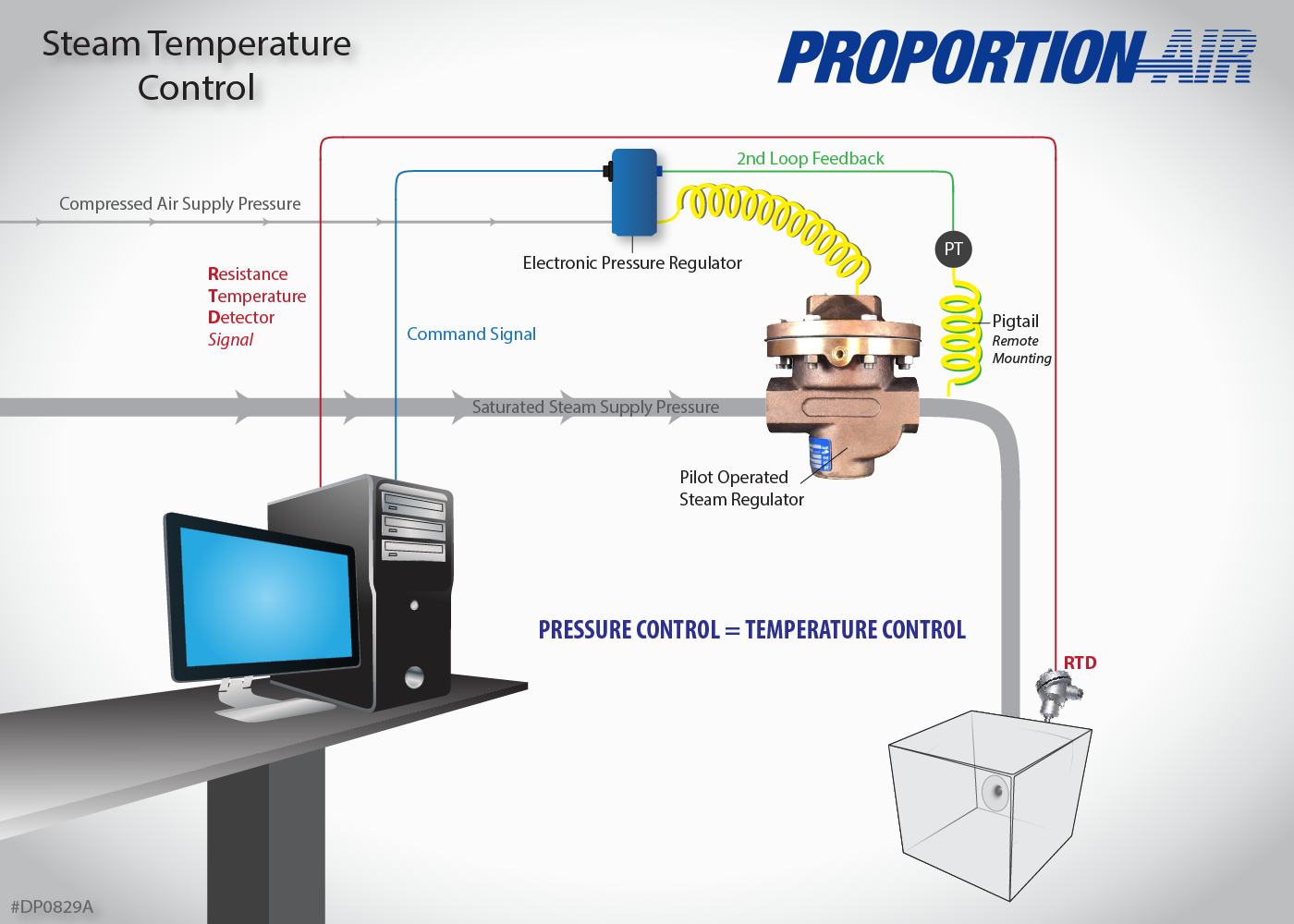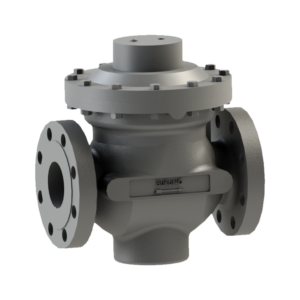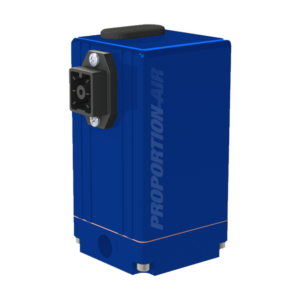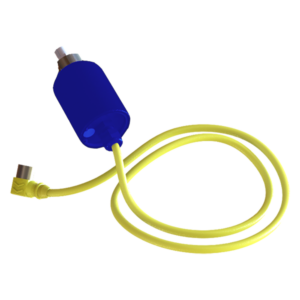
Tire curing, food processing and many bio-reaction applications use saturated steam. Many of these processes employ a complicated steam control valve that is designed to modulate open and close to maintain a specific temperature. Steam temperature control does not have to be this complicated.
The temperature of saturated steam is directly related to its pressure, so tighter control of temperature, elimination of PID requirement and less temperature drift is easily achieved using a steam pressure regulator. Simply put: If you control the pressure of saturated steam, you can control the temperature. This is the Proportion-Air method.
This sketch shows a QB2/BD steam regulator and DST (transducer) proportional valve assembly being used to control the pressure of saturated steam. The Proportion-Air electronic regulator assembly is closed-loop around downstream pressure so a command signal is all that needs to be given to the QB2 in order to achieve the pressure (temperature) required. An analog monitor signal output is available on pin 5 of the main electrical connector on the QB2 that can be taken back to a controller for data acquisition. This monitor signal comes from the DST downstream pressure transducer which is sensing steam pressure in the curing cavity.
This drawing also shows an RTD (resistance temperature detector) measuring steam temperature in the process and sending this signal back to the PLC. This is not a necessary component, but an optional backup measurement for confirmation.
Learn More about Saturated Steam Temperature Control
Products used in this application:
-

BD4 Pressure Reducing Regulator with Return Spring
Read more -

QBX Industrial Electronic Pressure Regulator
$576.00 Select options This product has multiple variants. The options may be chosen on the product page -

DST High Pressure Transducer
Read more
